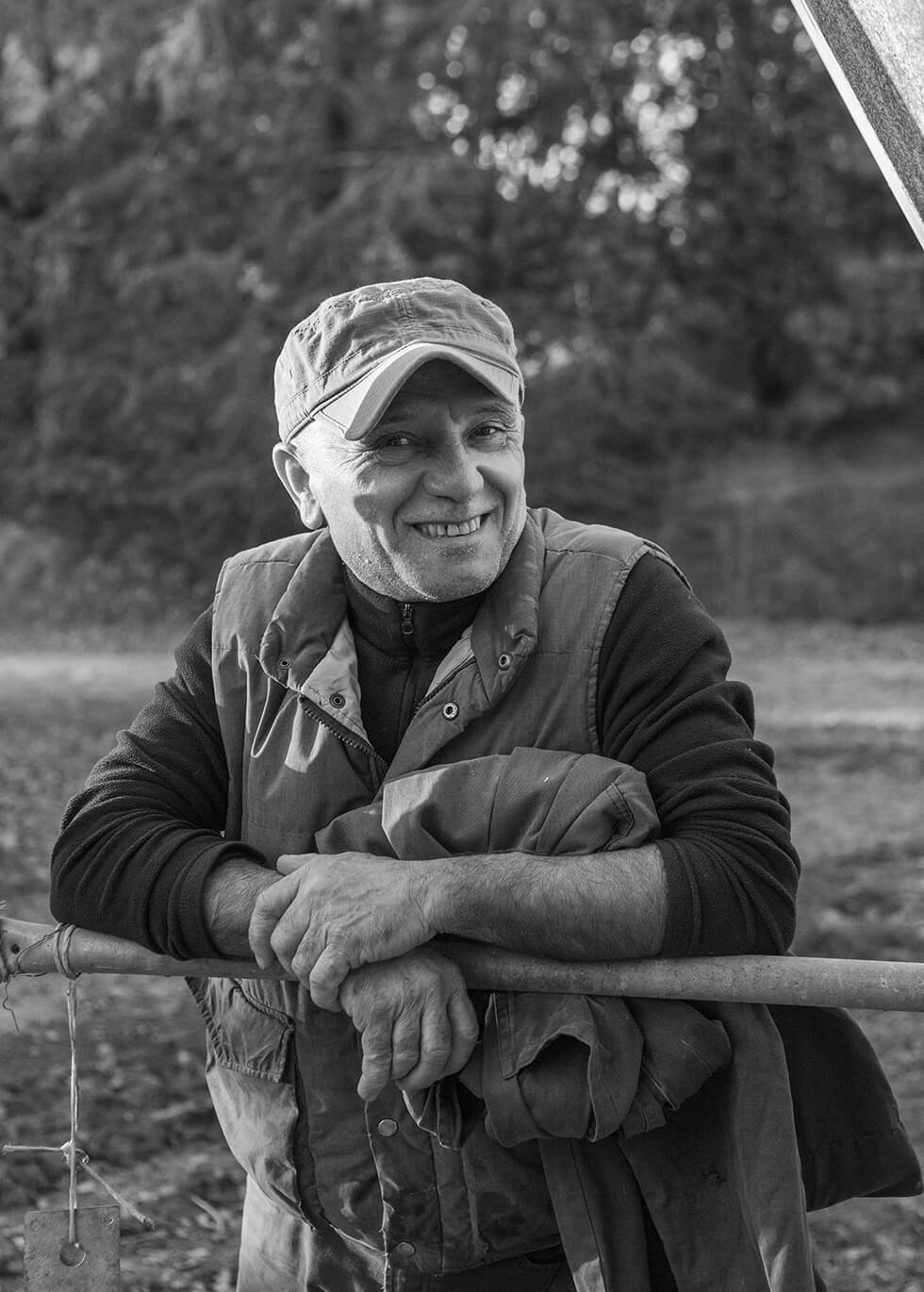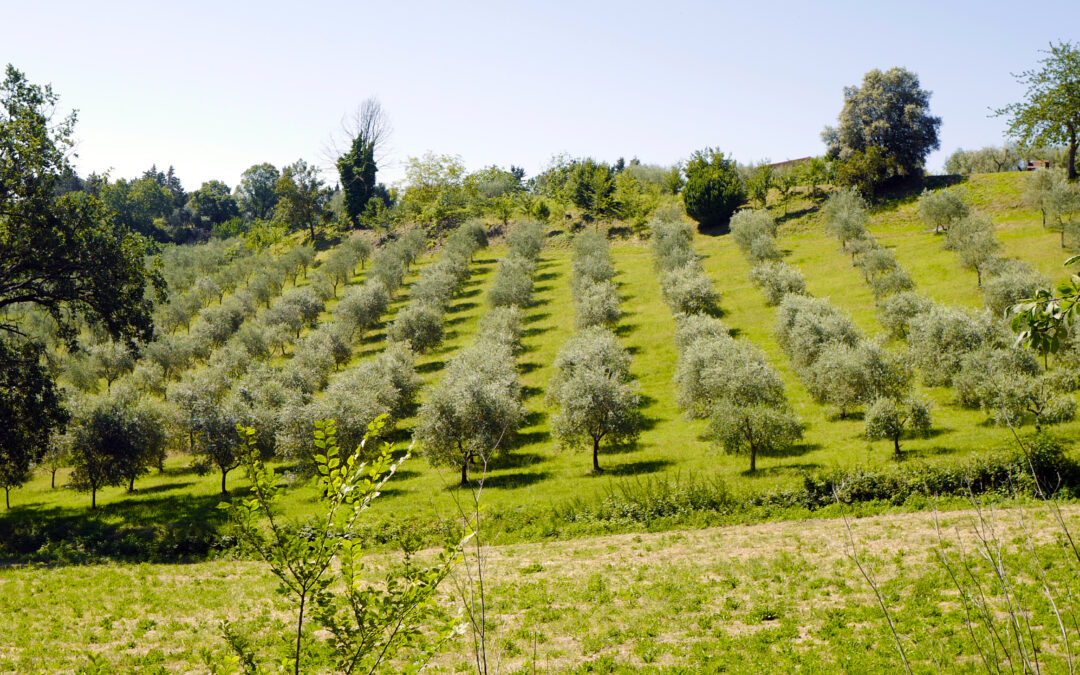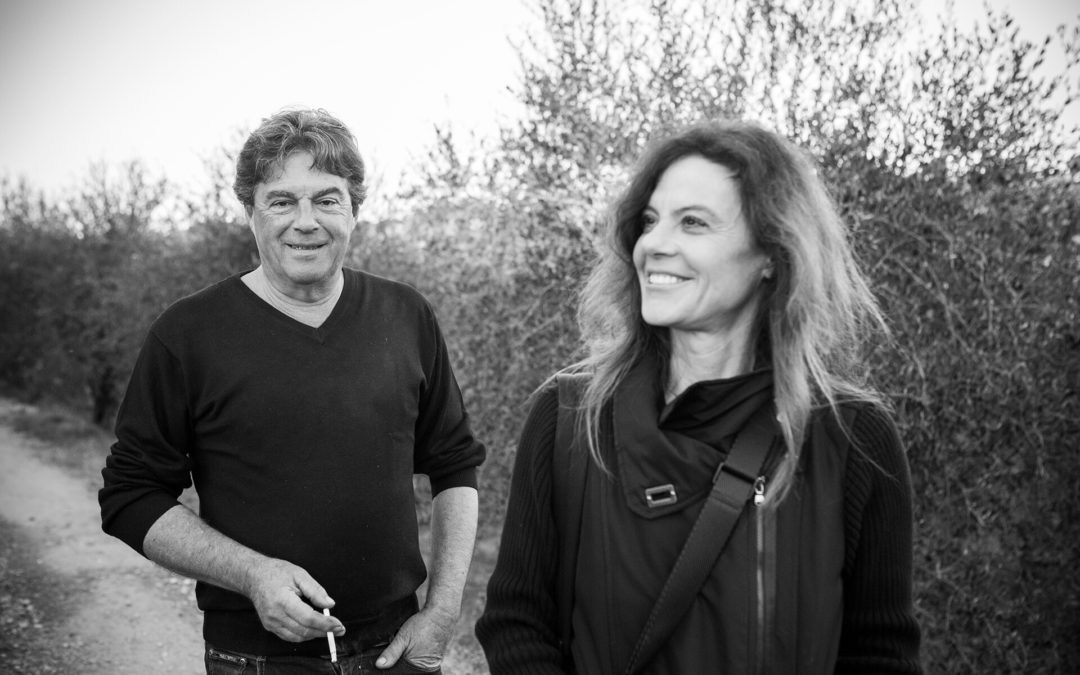SANTINO
A tenacious cheese maker.
From the late Middle Ages through the 1970s, cultivating land in Tuscany was regulated by mezzadria, an antiquated system of crop-sharing between landowner and farmer. The proprietor provided housing and land to the farmer, who essentially did all the work, growing wheat and vegetables, making wine and oil, and raising animals.
Expenses and profits were, in theory, to be equally divided between both parties, but deep-seated ancestral traditions—specifically, feudal tributes—worked to the farmers’ disadvantage, reinforcing their subordination. The padrone was entitled to all sorts of honors, gifts and perquisites: bottles of sweet wines and capponi for Christmas, baskets full of the best garden products, and sometimes even the right to a few free services, such as fare il bucato: periodic laundry loads from the massaia, the farmer’s housewife.
However, by the 1970s, as Italy was becoming increasingly industrialized, its outmoded social order was crumbling, and the mezzadri abandoned the countryside to seek more secure jobs in cities. Farms were left in the hands of the agriculturally inexperienced, and the system eventually collapsed.

In 1959 Antonio Corbeddu, Santino’s father moved from Sardinia to Tuscany with 300 Sardinian sheep in tow.
If things were looking grim in Tuscany, Sardinia was experiencing a sheep-farming boom. However, land was sparse, and the land that was on the market didn’t lend itself to significant expansion. The combination was lethal, and the ambitious Sardinian sheep-farmer and cheese-maker Antonio Corbeddu needed to come up with a solution.
He knew that Tuscany had a long tradition of cheese making, and that the distribution channels for his products, were he to move, would already be in place. Furthermore, with accessible, expandable, affordable land, he realized that moving to the mainland would work to his advantage, including the opportunity to establish a sheep farm without conflicts with the local population. It was a clear-headed assessment and forward-looking plan. What’s impressive is that he seemed to have seized the opportunity long before others did.
In 1959, Antonio moved from Sardinia (Oliena, in Barbagia) to the Crete Senesi with 300 Sardinian sheep in tow. Sardinians are canny entrepreneurs, hardworking and diligent, not afraid of living in harsh environments and able to adapt to new ones. In 1961, Maria Antonia joined the husband in Tuscany, and a year later, Santino, their first son, was born.

Today, Santino is 58 years old. He owns a beautiful farm in Montaperti, the site of a famous 13th-century battle between Florence and Siena, proxies in the larger conflict between the Guelfs and the Ghibellines. To honor the Sienese army’s sole victory over the Florentines, Corbeddu branded his cheese Ghibellino.
Since his brother Pasqualino moved to Brazil in 2010, Santino does all the work around the fields and in the cheese factory by himself, which is impressive and incredibly taxing. Seven hundred and fifty sheep—more than twice the size of the flock his father brought over from Sardinia—need to be fed, cleaned and directed in and out of the stables every day. Riding his horse and accompanied by a posse of loyal dogs, Santino doesn’t complain about the weather or his lack of sleep.

Left alone by the Italian bureaucracy to defend his family from the rampant rise of the wolf population, he continues to push back hard against adversity, never for one minute feeling sorry for himself. Ghibellino’s cellars are full of fragrant cheeses of varying ages neatly placed on layers of wooden shelves. He produces creamy ricotta cheese every week. Santino sells his cheese locally to quality restaurants, bottegas and delicatessen. He attends markets and food fairs, always on the move. He doesn’t talk much—he has no time for that. But he has a sweet face and the reassuring smile of a sensitive, solitary man.
Life hasn’t always been so generous with Santino. He lives alone with his elderly mother and his two young kids. His daughter Matilde was in preschool with my daughter Gemmarosa, and they have kept in touch through the years, even when we moved to New York and Siena became our residence during summer vacations only. Matilde is a poised young woman whose stutter has never threatened her confidence nor prevented her from consistently placing at the very top of her class.
Today Santinio does all the work around the fields and the cheese factory by himself…He never complains about the bad weather or the lack of sleep.
We paid a visit to Santino at the beginning of the year on a beautiful afternoon. The sun was about to disappear behind the soft Tuscan hills, coloring them with a last stroke of winter gold.
In the distance, hundreds of baby lambs repetitively bleated a plaintive song, creating a mystical sense of awe. We took many photos, bought our cheese and then quietly slipped away, as if we were we were leaving a church or a temple.
We had experienced one of those spontaneous and indelible Tuscan moments, the kind you can never plan nor ever repeat in quite the same way. We drove back to Siena, fulfilled.





